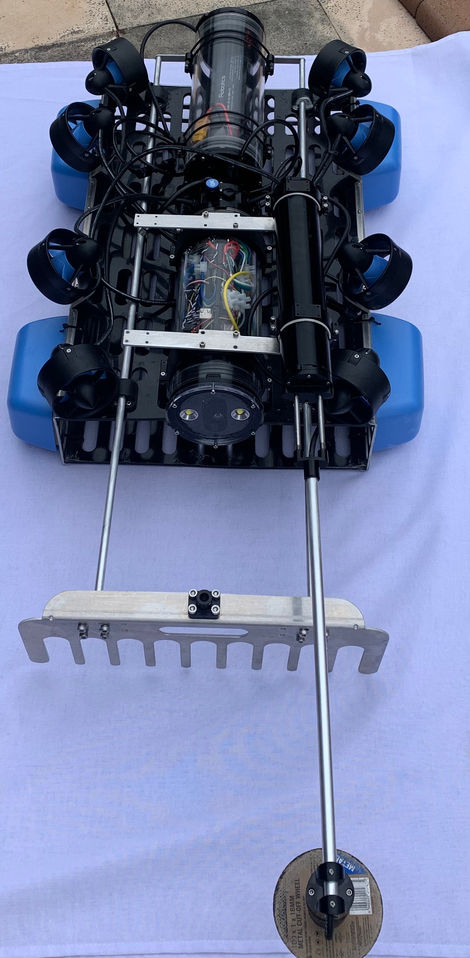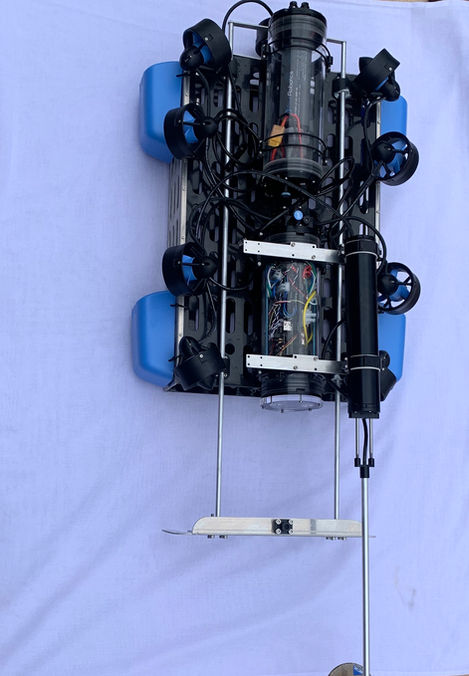Environmental
Marine Debris Removal
At Down Deep Drones, we are focused on doing what we can, to help protect our oceans.
We appreciate and value all the work that the not-for-profit sector is doing to clean up our oceans, and want to express our gratitude for this. We have the ability to create basic and no frills versions of all of our underwater drones. Highly functional, they will not be as polished as our usual selection, but are robust and easy to operate with specific tasks that can be performed.
We can:-
Lift tyres from the ocean floor at depths of 300 metres.
Bring heavy debris weighing 200kgs using airbags deployed by the ROV.
Collect marine debris from depths down to 600 metres.
Contact us for more information.

ROV De-Litter Bug
We have successfully designed a small portable ROV De-Litter Bug for a reasonable price specifically to remove ocean debris. It can go down to 600 metres, and with a special attachment can bring large items like a tractor tyre to the surface. It can collect marine debris from the ocean floor in bulk, at around 5 kilograms at a time. Be the first to use our prototype! At a discounted rate of $8,000 USD we would love to have your feedback.
Please express your interest here.
Marine Debris Collecting Rov- Prototype
Testing and refinements are being conducted on our first marine debris collecting underwater drone.

Shocking Ocean Pollution Statistics:
-
100 million marine animals die each year from plastic waste alone.
-
100,000 marine animals die from getting entangled in plastic yearly – this is just the creatures we find!
-
1 in 3 marine mammal species get found entangled in litter, 12-14,000 tons of plastic are ingested by North Pacific fish yearly.
-
In the past 10 years, we’ve made more plastic than the last century. By 2050, the pollution of fish will be outnumbered by our dumped plastic.
-
The largest trash site on the planet is the Great Pacific Garbage Patch, twice the surface area of Texas, it outnumbers sea life there 6 to 1.
-
300 Million tons of plastic gets created yearly, and this weighs the same as the entire human population, and 50% is single-use only.
-
There are 5.25 trillion pieces of plastic waste estimated to be in our oceans. 269,000 tons float, 4 billion micro fibres per km² dwell below the surface.
-
70% of our debris sinks into the ocean's ecosystem, 15% floats, and 15% lands on our beaches.
-
In terms of plastic, 8.3 million tons are discarded in the sea yearly. Of which, 236,000 are ingestible micro plastics that marine creatures mistake for food.
-
Plastics take 500-1000 years to degrade; currently 79% is sent to landfills or the ocean, while only 9% is recycled, and 12% gets incinerated.
-
1950-1998 over 100 nuclear blast tests occurred in our oceans.
-
500 marine locations are now recorded as dead zones globally, currently the size of the United Kingdom’s surface (245,000 km²)
-
80% of global marine pollution comes from agriculture runoff, untreated sewage, discharge of nutrients and pesticides.
-
90% of the worldwide ocean debris comes from 10 rivers alone.
Sources: SAS, Ocean Crusaders, Earth Day




